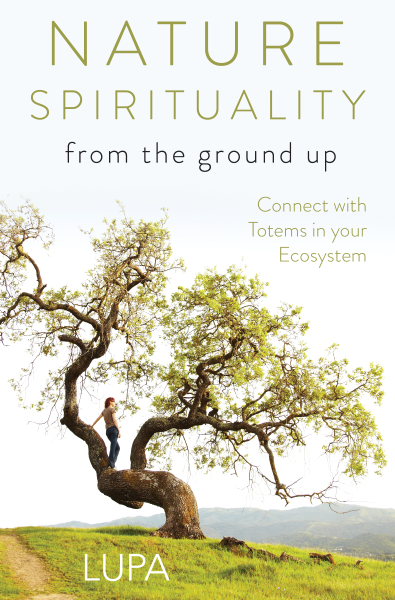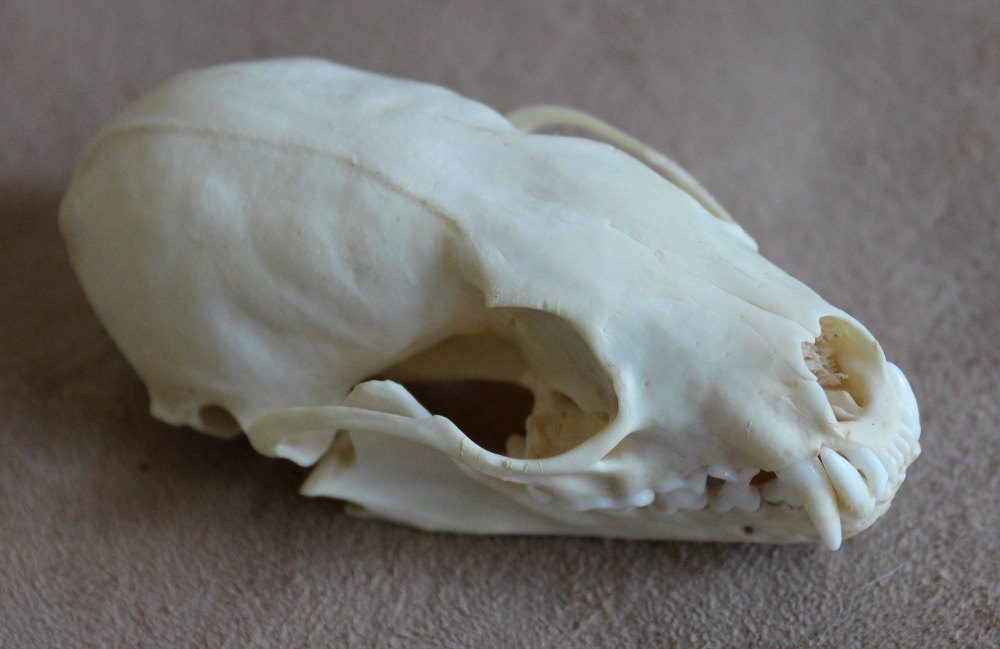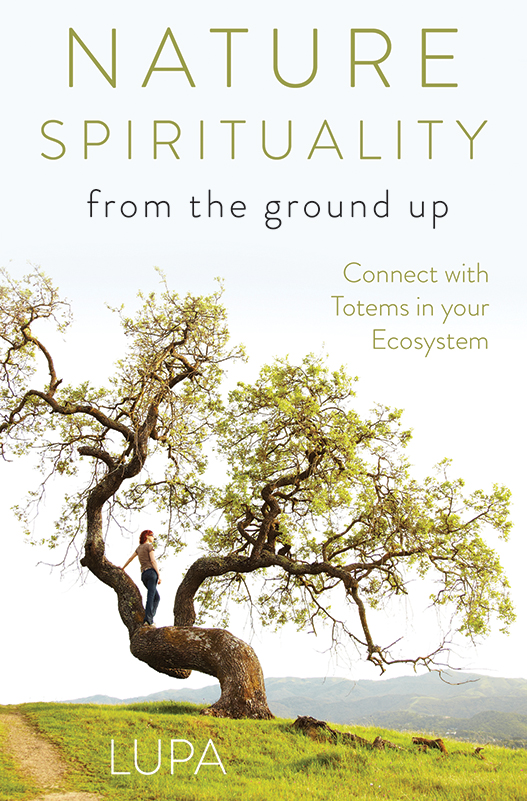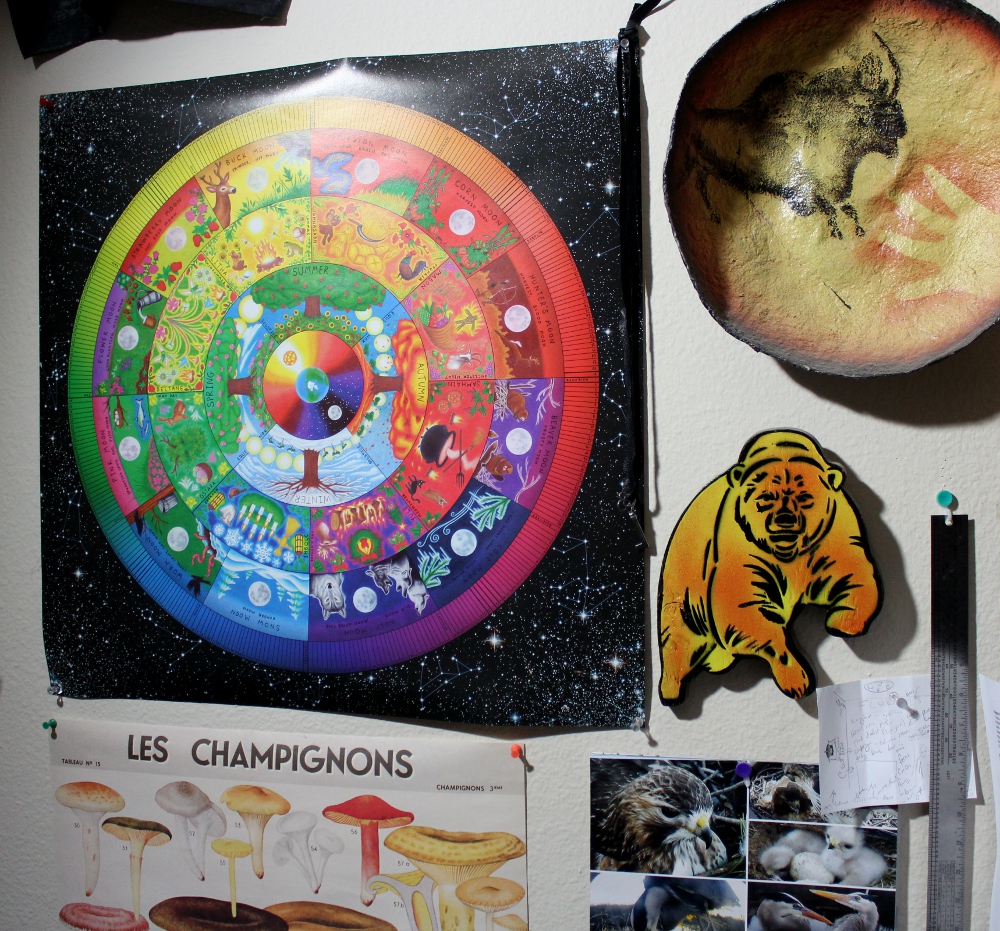I am pleased to announce that thanks to art and book sales at the Green Wolf booths at both FaerieWorlds and Kumoricon this weekend I was able to donate to both the Oregon Coast Aquarium and the Cornell Lab of Ornithology! For almost 20 years I’ve been donating a portion of the proceeds from my creative works to nonprofits that benefit wildlife and their habitats, and for the last several years I’ve also volunteered with local organizations in habitat restoration. Thank you for helping me support these two excellent facilities!
Why Self-Employment Is Like the World’s Longest Job Interview
One of the biggest challenges my fellow creatives have to face is self-promotion. A lot of people who excel at creating art, music, writing, performance and so forth, who can express themselves beautifully through their chosen media, freeze up like the proverbial deer when it comes to promoting what they do. Sometimes it’s an acute case of introversion, something I had to work hard to overcome. And it’s no secret that there’s a high correlation between creativity and low self-esteem and/or excessive self-criticism. Plus when it comes down to it, most of us would rather be making cool stuff than telling people about it; we like to show, not tell.
However, if your art is going to end up being anything more than a hobby–and it’s okay if it stays that way–you have to be good at getting the word out and talking up your creations. Or, to put it in more blatant terms: you have to be able to sell yourself. (Cue dramatic scary music.) This, of course, bothers a lot of people. We’re taught not to brag, and that anyone who stands out will end up getting knocked off their pedestal soon enough. And, sadly, many of us have had people in our lives telling us that we were worthless, or that our art wouldn’t go anywhere. Years of that can really do a number on your confidence.
Even among creatives, there’s this narrative that if you promote yourself and your work you’re narcissistic, selfish and only in it for the money. I tend to think that’s rather a sour grapes sort of attitude, but it’s also symptomatic of that ongoing tendency toward self-devaluation, in this case projected outwardly onto more active promoters.
But you know who else has to be self-centered and all about the money? Job candidates. Nobody complains about them talking about themselves, or negotiating a higher pay rate. Hell, those things are encouraged and praised! They’re signs of a real go-getter that you should totally hire for your company! It’s just another way in which self-employed people, especially creatives, are held to unfair standards in this society.
What if you thought of yourself as being a job candidate every time you promoted a new show you were doing, or a new piece of artwork, or story or book or article? You’re putting your best foot forward, fancy outfit and all. Okay, maybe in some cases the outfit is actually a book cover, but you get the idea: first impressions are important. And you have a limited amount of time in which to engage your potential employer, convince them of your skills and qualifications, and keep your fingers crossed that you get hired. “Being hired” may mean selling a concert ticket or a book or a print, but it still comes down to someone considering what you have to offer of sufficient value for them to compensate you for it.
Really, the main difference is in scale and timing. In a day job, you interview with one or more people at a single company, and if they accept, then you either sign on for a contracted time, or you stick around until either they get sick of you or you get sick of them. Either way, a successful interview means you get to stop interviewing for a while. With self-employment, every day has interviews, and that will always be a permanent part of my work. My day is full of them–with potential art customers, potential publishing allies, potential event venues, potential reviewers, even potential artistic patrons. On the bright side, I can get a lot of these interviews done in one fell swoop. My blog post earlier today about preorders being available for my newest book reached lots of blog subscribers, and will continue to catch the attention of people who come across my blog. The only further communication necessary is if someone either contacts me with specific questions, or make my day and buys the book.
And you know what? Interviews are just a normal part of my job–and yours, too. It doesn’t mean you’re a narcissist, even if you *gasp* enjoy the promotional end of things. Nor does it make you a money-grubbing sell-out; as detailed here, it’s totally okay to want to have a roof over your head so your art supplies and computer don’t get wet in the rain.
If you still have misgivings about that whole promotion thing, that’s okay. But you can at least lay to rest the worries that putting yourself out there somehow makes you less moral than someone with a day job.
Preorders Open For My Next Book, “Nature Spirituality From the Ground Up”!
Preorders for my next book are officially open! Nature Spirituality From the Ground Up: Connect With Totems In Your Ecosystem is due for release from Llewellyn Worldwide this January. If you’ve enjoyed my previous writings on (nonindigenous) bioregional totemism, you’ll love this book. It’s entirely dedicated to working with not just animals, but plants, fungi, minerals and more, all toward getting to know the land you live in better and rejoin the community of nature.
You can find out more about this book and preorder an autographed copy directly from me, to be shipped when I receive my first shipment of books in January, right here on my website. And here’s more information on all my current books!
If you like this, please reblog/share–we authors appreciate when folks spread the word about our writing! And thank you 🙂
New Monthly Rewards For Crafty People On My Patreon!
Are you a fan of the hide scraps, bone bits, beads and other crafty bits I destash on my Etsy shop? Have I got a deal for you, then!
I just added three new Patron packages at my Patreon account–and I mean packages literally. If you subscribe at one of these levels, I’ll send you a flat rate priority box stuffed full of all kinds of goodies that you can use in your own creations. Your care package may include fur and leather, skulls and bones, feathers and beads, vintage crafting how-to books, colorful yarn, crafting tools and other stuff to make stuff with. Plus you’ll have access to my Patron-only feed, and the monthly totem profile!
So what are you waiting for? Sign up today at http://www.patreon.com/lupagreenwolf 🙂
News! Patreon and Paths Through the Forests
Just a reminder–today’s the last day you can sign up for the book-of-the-month package on my Patreon and get a free copy of my next book Nature Spirituality From the Ground Up when it comes out in January!
Also, those with keen eyes may notice I added a few more Patron rewards to the roster. Sign up today (July 31) and you can get your first monthly package of goodies sent to you next week–head over to http://www.patreon.com/lupagreenwolf to join!
***************
I’ve been really busy with art lately so I haven’t been doing as much writing, but I did publish a post over at Paths Through the Forests earlier this week that’s getting a LOT of attention! You can read it at Our Deadly Lack of Nature Literacy.
Quick Note: Want to Read an Excerpt From the Tarot of Bones Book?
Over at the Tarot of Bones updates blog I’ve posted an excerpt from the first draft of the Tarot of Bones companion book. I figured you all might enjoy getting a preview of what’s to come! If you aren’t familiar with the Tarot of Bones, feel free to check out the website detailing this ambitious art and writing project I’ve been working on since the beginning of the year.
Tell Me True: Why Do You Buy Art?
I was having a conversation with a fellow artist at the Sculptors Gallery in Portland last week. We started chatting about why people buy art, to include our own motivations. A lot of people considered to be “art collectors” are looking for a good investment. They’ll drop thousands of dollars on a piece of fine art in the hopes that a few years down the line it’ll be worth even more thousands–or even millions–of dollars. Others are buying pieces that match the colors and aesthetic of a particular room in their home, or because they have a space to fill on a wall or in a corner. On a more personal level, many collectors enjoy supporting artists they like, and on a grander scale they may endeavor to help an entire movement come to fruition.
My own motivations tend to come from a place of personal enjoyment. Sometimes I’ll see an original or a print that really speaks to me, whether on an aesthetic or spiritual level (or both) and I decide I want to be able to keep looking at it. Very often the art has nature-based themes, and in our discussion I figured out the primary reason I like the art that I do: it reminds me of the wild places I’ve visited.
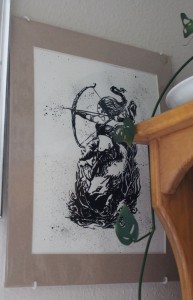
For someone who loves non-human nature as much as I do, I spend a terrifying amount of time indoors. Whether I’m typing away on the computer or sitting at my workbench, I can spend days at a stretch in the apartment. I usually have to schedule out my longer periods of outdoor time, like hiking and backpacking, which takes away a lot of the joy of spontaneity. So to help me keep my sanity, I surround myself with reminders of the world outside.
While a lot of that involves my natural history collection, like skulls and hides and such, I also have some select pieces of art, both originals and prints. Some of it is from artists I personally know; others I got at street fairs, galleries and other events, or ordered online. All of it, though, makes me intensely happy when I look at it. There are days when I’ve boosted my mood just by looking at what’s hanging on the nearest wall.
And I know that while right now I’m in great physical condition, someday there will come a time when I’m no longer capable of doing multi-day backpacking trips on the slopes of Mt. Hood, or scramble down embankments for a swim in a river. And I want the art that I collect to be my solace, in tandem with my photos and memories. I want to still feel connected to these sacred places even when I’m no longer able to go to them myself. I don’t have a lot of money for buying art, but what I do buy is part of an investment in a safe emotional space for the future.
So, let me ask you: why do you buy art? What makes you want to bring home something created by someone else’s hands?
Want to add my art to your collection? Consider looking over my portfolio, checking out my Etsy shop, or becoming my Patron on Patreon!
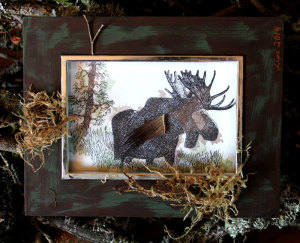
Want a Free Copy of the 2016 Llewellyn Magical Almanac?
Apologies for the scarce blog posts as of late; it’s festival season, which means I’ve been spending a lot of time on art, plus the Tarot of Bones has been asking a lot of my attention lately. But I wanted to put a quick note here letting you know I’m giving away a free book!
I am one of the essayists in the 2016 Magical Almanac published by Llewellyn; in fact, my essay, “Nature’s Pajama Party: The Winter World of Wildlife” is the very first one in the book–woohoo! And since they sent me two contributor copies, I wanted to give one away. So I’m holding a giveaway over on Goodreads through August 16. It’s easy to enter–just register for Goodreads if you haven’t already, then click the “Enter Giveaway” button here on the giveaway page. After August 16, Goodreads will select a winner at random and send their mailing information to me. And I’ll be signing the book, too, for an additional personal touch.
So what are you waiting for? Enter to win today!
A Couple of Important Patreon Changes/Perks!
This is your last chance to get a copy of my next book,Nature Spirituality From the Ground Up, for free!
Over at my Patreon account, the Book of the Month Patron package at $25 ($35 for international folks) is going to change next month! it is currently six months until my next book, Nature Spirituality from the Ground Up, comes out. Currently, Patrons at that level receive one of my books a month until, after seven months they have all of the books pictured. They will also receive a free copy of Nature Spirituality From the Ground Up when it comes out in January 2016.
Starting on August 1, 2015, the package will change. Patrons who remain at that level for eight months will get one of my current books, to include Nature Spirituality From the Ground Up, per month. And at the end of eight months, I will be adding their name to a special preorder list; people on that list will end up getting a free copy of my next book (NOT including the Tarot of Bones deck and book), even if they are no longer my Patron when it comes out. For sake of transparency, I do not currently have another book contracted, but I have one manuscript I’m shopping around and a proposal I’m about to write, so I’m not about to retire as an author. And hey–whatever it’ll be and whenever it shows up, it’ll be absolutely free!
***************
Have you always wanted one of my wolf headdresses but weren’t able to pay for it all at once? I’m now offering a unique payment plan via my Patreon account! Give $100/month for an entire year, and not only will you get a custom-made wolf headdress at the end of that year, but for your first month you’ll get a trio of fox tails. Plus you’ll have access to my Patron-only feed with exclusive content and sneak peeks, my monthly Totem Profiles, and other goodies. And for those for whom $100 is a bit much, I also still have my $30/month red fox headdress program that works the same way.
Interested? You can become my Patron for as little as $1/month right here!
The Price is Right: On Haggling, Piracy and the Value of Art
Last week, a couple of things of note popped up on my social media radar. One was this excellent article by Miranda Campbell, Culture Isn’t Free, talking about how expecting artists and creatives to work for “exposure” leaves the creation of culture largely in the hands of those who hold the money. The other was yet another “paganism on a budget” Tumblr post collecting links to sites where you can download free, pirated pagan ebooks, still under copyright rather than public domain. That post had over 2,000 likes/reblogs, if I recall correctly, and likely has more now.
The first one I read and appreciated, then shared on Facebook. The second I forwarded to the publishers whose books were listed so they could file DMCA takedown notices with site hosts. The difference? Ms. Campbell had an agreement with Jacobin as to how her writing would be distributed and how she would be compensated (if at all; I’m not privy to their arrangements). Such websites want links to their content to go viral, and I thought it was worth sharing. But with the website that was linked on the Tumblr post, there was a violation of the terms that the authors of the books had originally agreed to. Part of the publisher’s job is to maintain the terms of the contract, to include fighting privacy; they have more resources, on average, than a single author does.
The publisher-author relationship isn’t perfect. Ten percent royalties is still only a couple of bucks per book, and most authors don’t make a living on their writing. But the author still has the choice to negotiate a contract, and then sign or not sign it. It’s their decision to make their work available through a particular, if often imperfect, avenue that will at least get them some compensation for their effort. And in an economy where creatives are increasingly asked (or told) to work free of charge, some compensation (protected by contract) is better than none.
And to be fair, the publisher does a lot of work. When I sign a contract with a publisher for one of my books, I’m getting free editing, proofreading, layout and distribution, along with a certain amount of promotion. With my artwork, on the other hand, I’m carrying almost all of the burden, from materials acquisition and design creation to actually making the art to selling it in person and online. Either way, each sale of a book or piece of artwork funds far more than just the item itself.
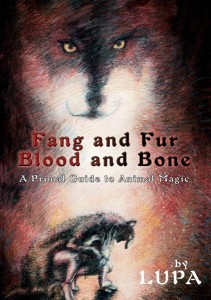 So we have to put a price on that time, effort and investment of resources. One of the biggest challenges I’ve seen artists (especially newer ones) face is how to price their art. A price is not merely a number. It’s a statement of value. What is this item worth, not only for its content, but the human resources that were poured into it from start to finish? What costs were incurred in its gestation and birth? And, more importantly, what is the value of the human life that was invested in it, time that needs to be measured in dollars rather than breaths? It’s a difficult thing to determine, and even after almost twenty years I still struggle with pricing my work. (My publishers make the job easier by setting the price on my books themselves, gods bless them.)
So we have to put a price on that time, effort and investment of resources. One of the biggest challenges I’ve seen artists (especially newer ones) face is how to price their art. A price is not merely a number. It’s a statement of value. What is this item worth, not only for its content, but the human resources that were poured into it from start to finish? What costs were incurred in its gestation and birth? And, more importantly, what is the value of the human life that was invested in it, time that needs to be measured in dollars rather than breaths? It’s a difficult thing to determine, and even after almost twenty years I still struggle with pricing my work. (My publishers make the job easier by setting the price on my books themselves, gods bless them.)
Eventually a price is determined, and placed out for the public to view. That price says “This is the amount of money that I will accept for this product of my work.” It’s the same as a contractor saying “I want this much per hour to fix your sink” or a pizza place stating “Here’s how much a large cheese deep dish pie will cost you”. It is an invitation to an economic contract that is signed when the money is passed over. A simple agreement, sure–you give me that thing, I give you this thing, we consider it a fair trade, we go on with our lives.
There are always people who try to weasel their way out of that agreement. Some of them steal outright. I’ve lost track of how much of my artwork has been shoplifted from my booth at events I’ve vended at over the years. Only once has anything been brought back, by a tearful preteen girl flanked by her angry mother. The rest is spirited away by malcontents and children who don’t seem to understand the damage they do by their actions. But books get stolen, too, and far more often in the digital age. Every person who downloads a pirated .pdf of a copyrighted book is a thief*. It’s not the same as a secondhand paperback bought new and then sold used later on; that’s a single copy that was fairly compensated for, and it will never multiply into more copies (at least not without the help of Xerox or a scanner.) But a .pdf multiplies by its very nature, and within seconds. Whereas a paperback can pass from person to person in a circle of friends, and perhaps circulate among a dozen people in a month if they’re all fast readers, a .pdf can go to thousands of people in a day, and they get to keep their copies no matter who else they pass the book on to. Either way–art or books–the creator is the person who loses out in piracy.
But that’s not the only way the “I offer you this in exchange for this” agreement can be damaged. Allow me to present to you: the haggler. This is that person at events (or via email) who, dissatisfied with the numbers on the price tag, and weaned on Wal-Mart’s “Low Price Guarantee”, decides that they should have the privilege of paying less for a creation than its creator has valued it at. And so they approach said creator and, holding up a piece of art like a yard sale discard, ask “Will you take five bucks for this?”
To be honest, I consider it somewhat offensive when someone asks if I’ll accept a lower price on something I’ve created. I know it’s likely not meant as an insult; the person asking just wants to save a little money. Who doesn’t want that? In an economy where big box stores lure people in with ever-bigger sales and price slashes supported by government subsidies and slave labor, consumers have been trained to get bargains and they never think of who actually pays the costs for their savings**. It smarts more personally, though, when they try to do it to an individual artist. It’s not just that they’ve asked the creator to take less money; it’s that they treat the creation like it has no personality, no love poured into it. It’s just a thing to them.
Haggling, shoplifting, piracy–all these are symptomatic of a bigger cultural problem: the devaluation of art. I have yet to meet an artist who hasn’t at one point or another heard some variation on the following:
“It’s just art, you have fun making art, so it’s not actually work.”
“Will you make me this thing for free, or the cost of materials?”
“It’s exposure–it’ll get you more customers, really!”
“Oh, my aunt/kid/friend made something like that!”
“I bet I could make that!”
“It’s easier to be an artist than a scientist/real estate agent/hotel manager so you shouldn’t expect to get paid like one.”
 Sure, lots of people make art as a hobby, and even for those of us who do it for a living it can still be fun. But as I wrote last year, Art is Work. If what you do for a living is fun, then you’re doing something right. But that doesn’t take away the amount of effort you put into it. And only you can truly know the value of that work, and decide whether the compensation you’re getting is worth it or not.
Sure, lots of people make art as a hobby, and even for those of us who do it for a living it can still be fun. But as I wrote last year, Art is Work. If what you do for a living is fun, then you’re doing something right. But that doesn’t take away the amount of effort you put into it. And only you can truly know the value of that work, and decide whether the compensation you’re getting is worth it or not.
When someone shoplifts your art, or pirates your book, or tries to haggle you down from your prices, they are saying that they don’t think your work has as much value as you say it does. And in that moment they are insulting you and your work. Any compliments they have given “Oh, I love this piece, it’s so pretty” is tainted by their unspoken follow-up “….but I don’t think it’s worth all that much.” It’s up to you as to how you want to deal with them, but don’t for an instant think that your work isn’t worth what you value it at, no matter the words of thieves and hagglers.
We are artists and writers and creatives. Our work and our time have value, and we deserve to be compensated for our effort, and to be able to decide how our work will be distributed and offered to the public. Nothing less is acceptable.



